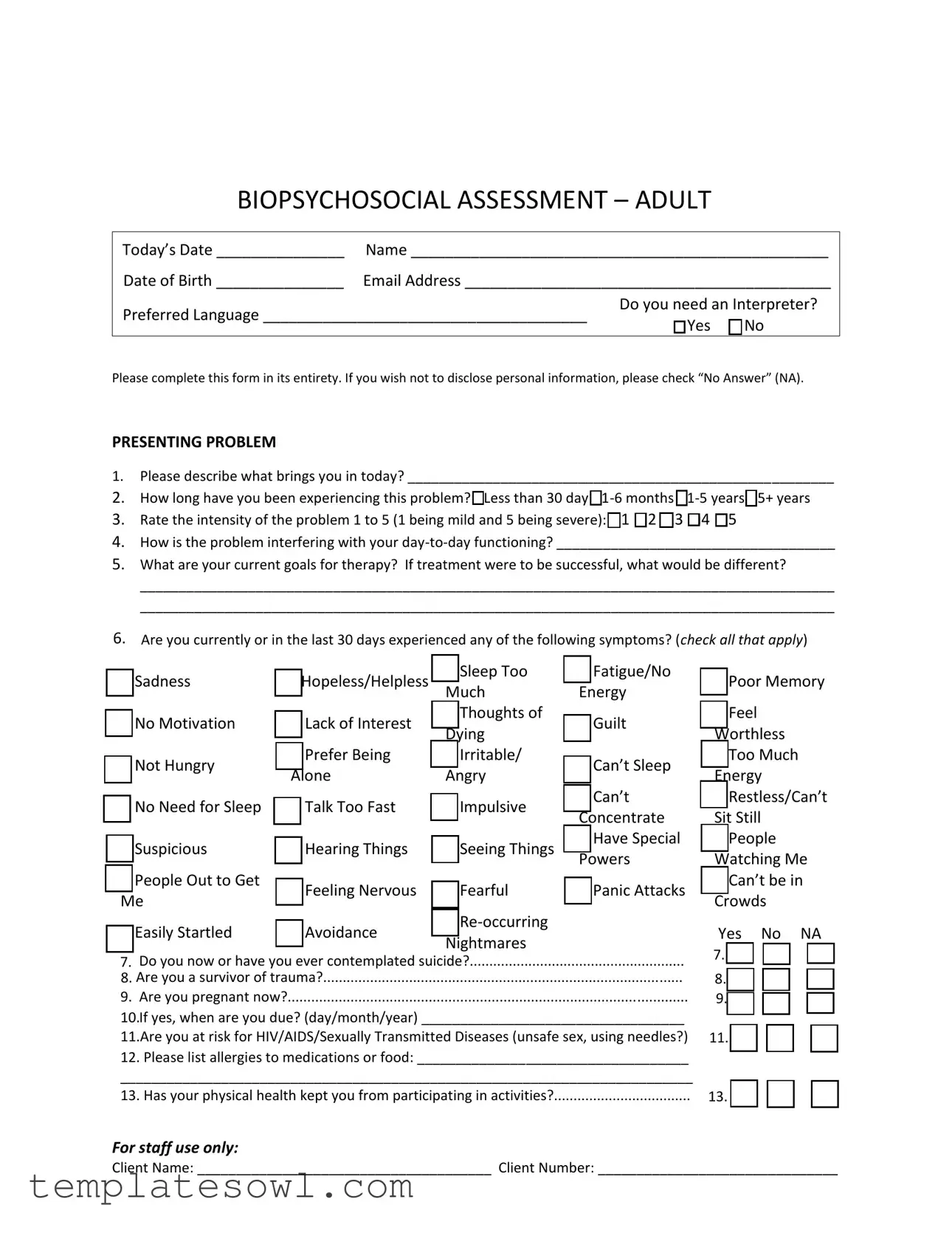What is the purpose of the Biopsychosocial Assessment Social Work form?
The Biopsychosocial Assessment form is designed to gather comprehensive information about an individual's mental, physical, and social health. This information helps social workers develop a better understanding of the client's overall situation. By assessing various aspects of life, including medical history, substance use, relationships, and personal goals, social workers can tailor interventions that address the client's unique needs.
Who should complete the form?
This form is intended for clients seeking social work services. Individuals may complete it themselves or with assistance from a social worker. It is essential that clients provide honest and accurate information to ensure effective support and intervention.
What are the key sections of the Biopsychosocial Assessment?
The assessment includes several sections:
- Presenting Problem
- Tobacco Use
- Substance Use/Addiction
- Personal, Family, and Relationships
- Education
- Legal Issues
- Work History
- Medical Information
These sections give a well-rounded understanding of a client’s background and current situation.
What information do I need to provide in the 'Presenting Problem' section?
In this section, clients describe the issues prompting them to seek help. They should specify how long they have been experiencing these problems, rate their intensity, and explain how the problem interferes with daily life. Clients are also encouraged to identify their therapy goals and any symptoms experienced in the previous month.
How is the data from the form used?
The information collected assists social workers in developing a treatment plan that is personalized and effective. It may also be used to evaluate progress over time and adapt interventions as needed.
Can I leave questions unanswered?
Yes, clients may choose to skip any questions they prefer not to answer. They can select "No Answer" (NA) for those questions. However, providing as much relevant information as possible can enhance the effectiveness of the assessment process.
What if I have concerns about privacy?
Confidentiality is a critical aspect of the social work process. All information shared in the assessment is treated with the utmost confidentiality and is only used for the purpose of providing support and services. Clients should feel secure in discussing sensitive topics related to their health and experiences.
Do I need to prepare anything before filling out the form?
While no formal preparation is necessary, it may be helpful to think about recent experiences, health history, and any support systems in place. Clients might want to gather any relevant medical records or information about medications they are currently taking, as this can help make the process smoother.
How can I request assistance in completing the form?
If clients require help with the form, they can ask a social worker for assistance. Additionally, if language barriers exist, clients may request an interpreter before completing the assessment to ensure accurate communication.
What should I do if I encounter sensitive topics or trauma?
Addressing sensitive topics or trauma can be challenging. Clients are encouraged to share only what they feel comfortable discussing. Social workers are trained to handle such topics with sensitivity, and they aim to create a safe space for clients to open up at their own pace.

